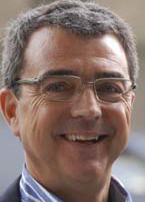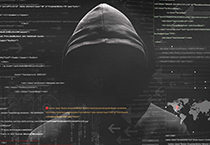As distribution system operators (DSOs) continue their digital evolutions, cybersecurity challenges continue to grow as the stakes are raised and new forms of criminality circle energy distributors, writes Aurelio Blanquet who is speaking at the SmartSec Europe 2016 event on 29-30 November 2016 in Amsterdam, The Netherlands
The heightened threat level being addressed isn’t necessarily a new challenge for DSOs because they have always faced risks from crime whether in theft of assets, from terrorism or the theft of energy itself. However, digitalisation adds a further layer of risk on top of the traditional threats facing the sector.
 “Digitalisation is the future so the security of digital becomes a priority,” acknowledges Aurelio Blanquet, the chairman of EE-ISAC, a publicprivate partnership that brings four major European utility companies together with technical universities, governmental bodies and secure technology providers. “The main challenge is to find and define cyber security policy.”
“Digitalisation is the future so the security of digital becomes a priority,” acknowledges Aurelio Blanquet, the chairman of EE-ISAC, a publicprivate partnership that brings four major European utility companies together with technical universities, governmental bodies and secure technology providers. “The main challenge is to find and define cyber security policy.”
“We are aware by now that the energy sector is a critical – maybe the most critical – sector for our modern society,” he adds. “This has made the energy sector very attractive for cyber attacks and cyber criminals are looking at ways to exploit digital vulnerabilities. The higher level of remote and interconnected digital assets creates a different vulnerability than a traditional physical user and this must be taken into account.”
Reliability and resilience remain the focus of infrastructure operators but concerns about reputational damage are starting to gain greater attention. “Reliability and resilience across the European energy infrastructures are a continuing challenge but digitalisation, within that, is becoming of utmost importance and becomes a priority in terms of avoiding the theft of critical data,” Blanquet says. “DSOs need to secure their data in order to maintain their credibility and to keep the company’s value in terms of their image.”
Regulation alone won’t be sufficient. “All aspects must be secure from physical to cyber and to build a cyber policy we need to look at our systems, processes and our people in addition to regulation,” he adds. “The most challenging issue is the culture and it has taken great effort to move the cybersecurity discussion on from being a technical or IT issue to being a board level consideration.”
Blanquet believes a single company approach won’t be effective since threats proliferate in so many different forms and experience needs to be shared. However, hackers collaborate and so should DSOs.
“There’s a very collaborative hacker community which is well-organised, well co-ordinated and long-established with a high level of expertise,” he says. “Individual hackers are seldom linked to cyber attacks which typically are made by groups of hackers collaborating to attack digital infrastructures.”
“If we collaborate we get away from being one step behind the hackers and can get one step in front,” he adds. “We need to adopt the same mindset as the attackers we face. Cyber crime has no boundaries and no working hours so it needs to be attacked on the same basis.”

The most challenging issue
is the culture
The mission of EE-ISAC is to enable this levelling of the playing field. “We are improving the resilience and security of European energy infrastructure through sharing and enabling joint efforts for threat analysis,” explains Blanquet. “We’re improving resilience by sharing what we know, what we know we don’t know and what we need to know so we can have the proper answers within our community and our members can use these to take their own effective measures.”
Blanquet says the next steps for EE-ISAC are to deliver value to members by building knowledge and sharing it with members, attracting new members to widen the knowledge base, to increase the visibility of the organisation to put it at the centre of security policy and other regulation and, finally, to have ISAC associations with other regions and countries.
“We’ve started working with organisations in the US and Japan,” says Blanquet. “As we build an international community of ISAC organisations from Europe across the world our communities will be strengthened.”










